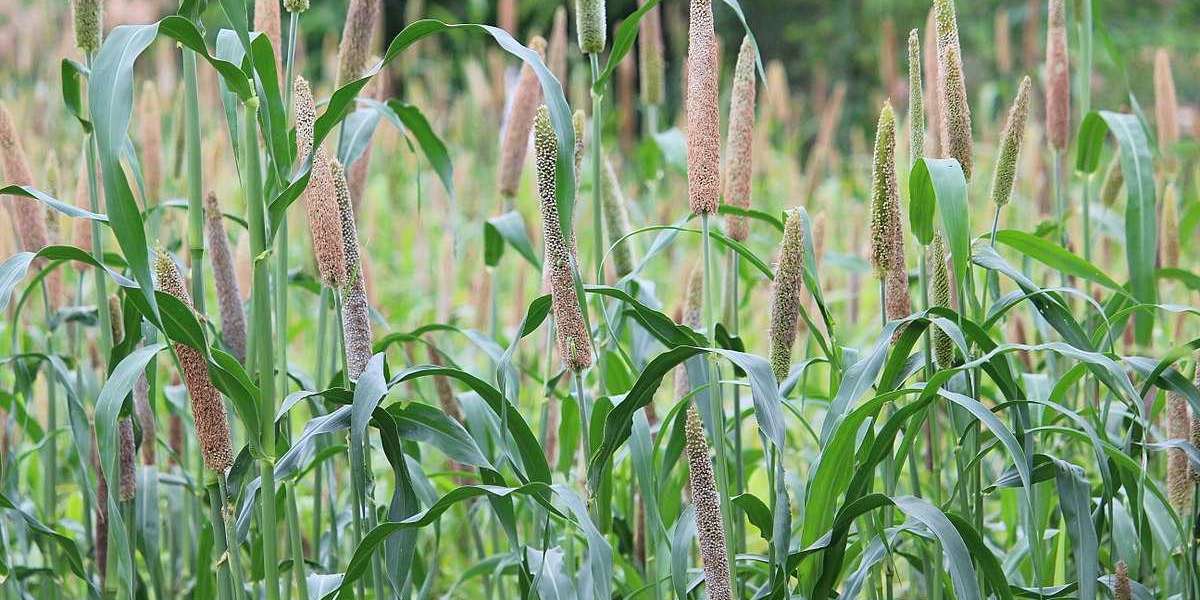Introduction
In the realm of nutrition and sustainable agriculture, the spotlight is increasingly turning toward ancient grains and forgotten crops that offer a myriad of benefits. Among these, pearl millet stands out as a versatile and resilient grain with the potential to address both food security and nutritional needs. In this blog, we delve into the myriad benefits of pearl millet, exploring its nutritional profile, ecological advantages, culinary versatility, and its role in fostering global food security.
---
Understanding Pearl Millet: A Nutritional Powerhouse
The Nutritional Bounty of Pearl Millet
Pearl millet, scientifically known as Pennisetum glaucum, is a small-seeded grain that has been cultivated for centuries, particularly in arid and semi-arid regions of Africa and Asia. Despite its humble appearance, pearl millet packs a powerful nutritional punch. Rich in protein, fiber, vitamins, and minerals, it offers a comprehensive array of nutrients essential for human health.
Protein-Rich Superfood
One of the standout features of pearl millet is its high protein content. With approximately 11 grams of protein per 100 grams, pearl millet emerges as a viable plant-based protein source, making it an excellent choice for vegetarians and vegans looking to meet their protein needs.
Abundant in Micronutrients
Beyond protein, pearl millet is replete with essential vitamins and minerals. It is particularly rich in iron, magnesium, phosphorus, and B-vitamins such as niacin and folate. These micronutrients play pivotal roles in various bodily functions, including energy metabolism, immune function, and blood formation.
---
The Environmental Promise of Pearl Millet
A Resilient Crop for a Changing Climate
In an era marked by climate change-induced uncertainties, the resilience of agricultural crops becomes paramount. Pearl millet shines in this regard, thriving in hot and arid conditions where other crops struggle to survive. Its deep root system allows it to access moisture from deeper soil layers, making it drought-tolerant and well-suited to regions prone to erratic rainfall patterns.
Biodiversity Booster
The cultivation of pearl millet promotes biodiversity in agricultural landscapes.Due to its adaptability to a variety of agroecological zones, farmers are encouraged to adopt more environmentally friendly farming methods, decreasing their reliance on chemical inputs and monoculture. By fostering biodiversity, pearl millet contributes to ecosystem resilience and soil health, mitigating the negative impacts of intensive agriculture.
Water-Wise Agriculture
Pearl millet offers a solution through its efficient water use. Compared to other cereal grains like maize, pearl millet requires substantially less water for cultivation, making it an ideal choice for regions facing water constraints.
Pearl Millet in the Kitchen: Culinary Delights
Versatility on the Plate
From porridges to flatbreads, pearl millet lends itself to a plethora of culinary creations. In many cultures, it serves as a staple ingredient, forming the basis of traditional dishes that are both nutritious and delicious. Its mild, slightly nutty flavor makes it a versatile addition to both sweet and savory recipes, appealing to a wide range of palates.
Gluten-Free Goodness
For individuals with gluten sensitivities or celiac disease, pearl millet offers a welcome alternative to gluten-containing grains. Its naturally gluten-free nature makes it a safe choice for those seeking to avoid gluten while still enjoying wholesome grains in their diet.
Sustainable Food Choices
In an age where consumers are increasingly conscious of the environmental and ethical implications of their food choices, pearl millet emerges as a sustainable option. Its low environmental footprint, combined with its nutritional prowess, makes it a win-win choice for both health-conscious individuals and eco-conscious consumers.
Conclusion: Embracing Pearl Millet for Health and Sustainability
In conclusion, pearl millet stands as a shining example of a crop that ticks all the boxes – nutritious, resilient, and sustainable. Its impressive nutritional profile, coupled with its ecological advantages and culinary versatility, make it a valuable addition to diets worldwide. By embracing pearl millet, we not only nourish our bodies but also support sustainable agriculture practices that benefit both people and the planet.
FAQs
Q: Is pearl millet suitable for individuals with gluten intolerance?
A: Pearl millet is, in fact, naturally gluten-free, making it a great option for people who are sensitive to gluten or have celiac disease.
Q: How does pearl millet compare to other grains in terms of water usage?
A: Pearl millet requires significantly less water for cultivation compared to crops like maize, making it well-suited to regions facing water scarcity.
Q: What are some popular ways to incorporate pearl millet into recipes?
A: Pearl millet can be used to make porridges, flatbreads, pilafs, and even desserts. It can also be ground into flour for baking or used as a substitute for rice or couscous in savory dishes.
Q: Is pearl millet suitable for sustainable agriculture practices?
A: Yes, pearl millet is well-adapted to diverse agroecological zones and promotes biodiversity, making it a sustainable choice for farmers looking to adopt eco-friendly farming practices.
Read more article



